
cd_nom

| Author : Benjamin GUICHARD/Agence Française pour la Biodiversité |
 |
To get the picture, please visit:
Benjamin Guichard
email : inpn@mnhn.fr
Despite the Creative Commons license, please inform the author of the use which will be made of his photo
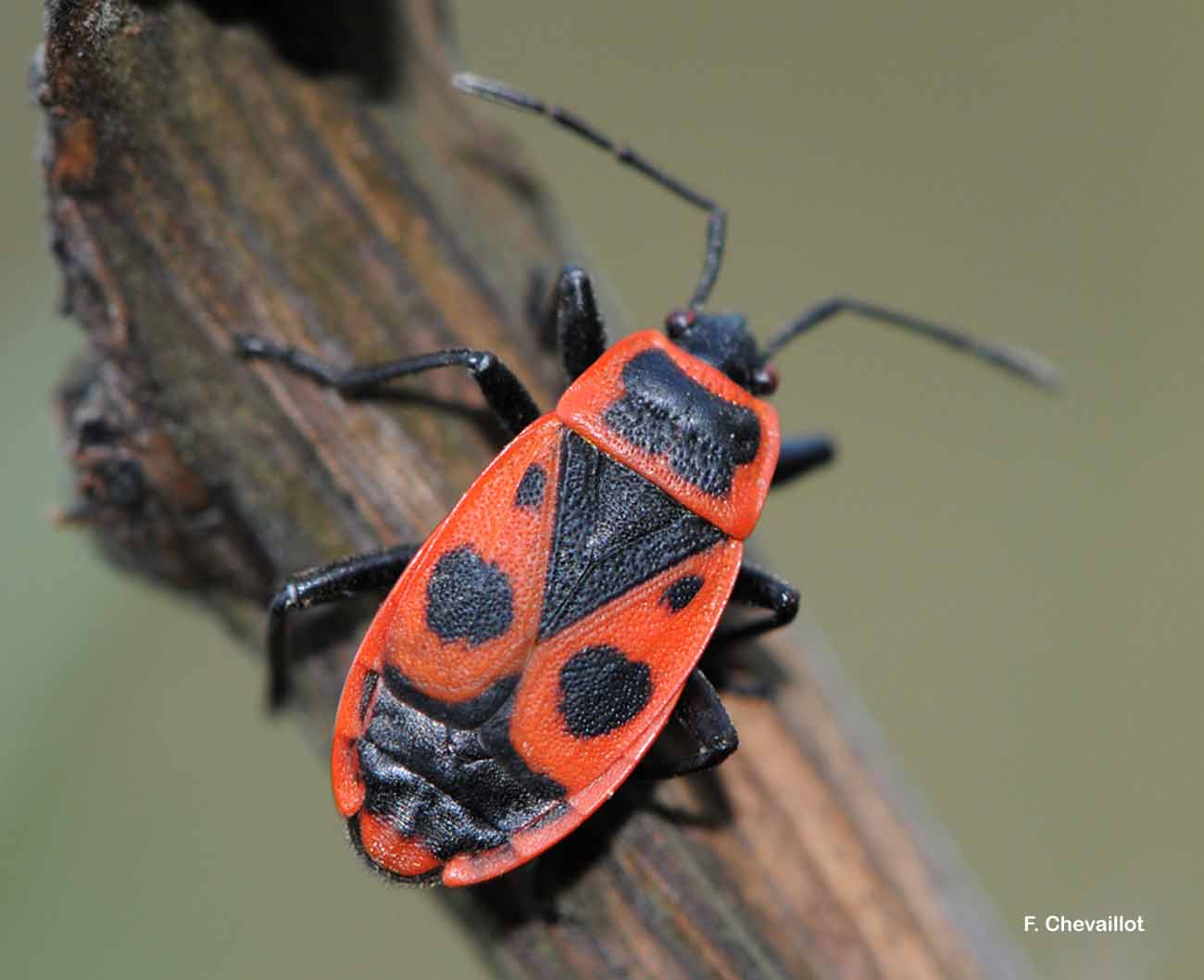
| Author : F. Chevaillot |
 |
To get the picture, please visit:
Fred CHEVAILLOT
Moulin de Castor
La Maynobe
12550 COUPIAC
06 51 19 18 32
09 88 28 31 26
www.insecte.org
email : fred.chevaillot@wanadoo.fr
Any reuse of one or more photographs on this site is subject to an authorization request from the author.
Link to the Code of Intellectual Property (Legifrance)
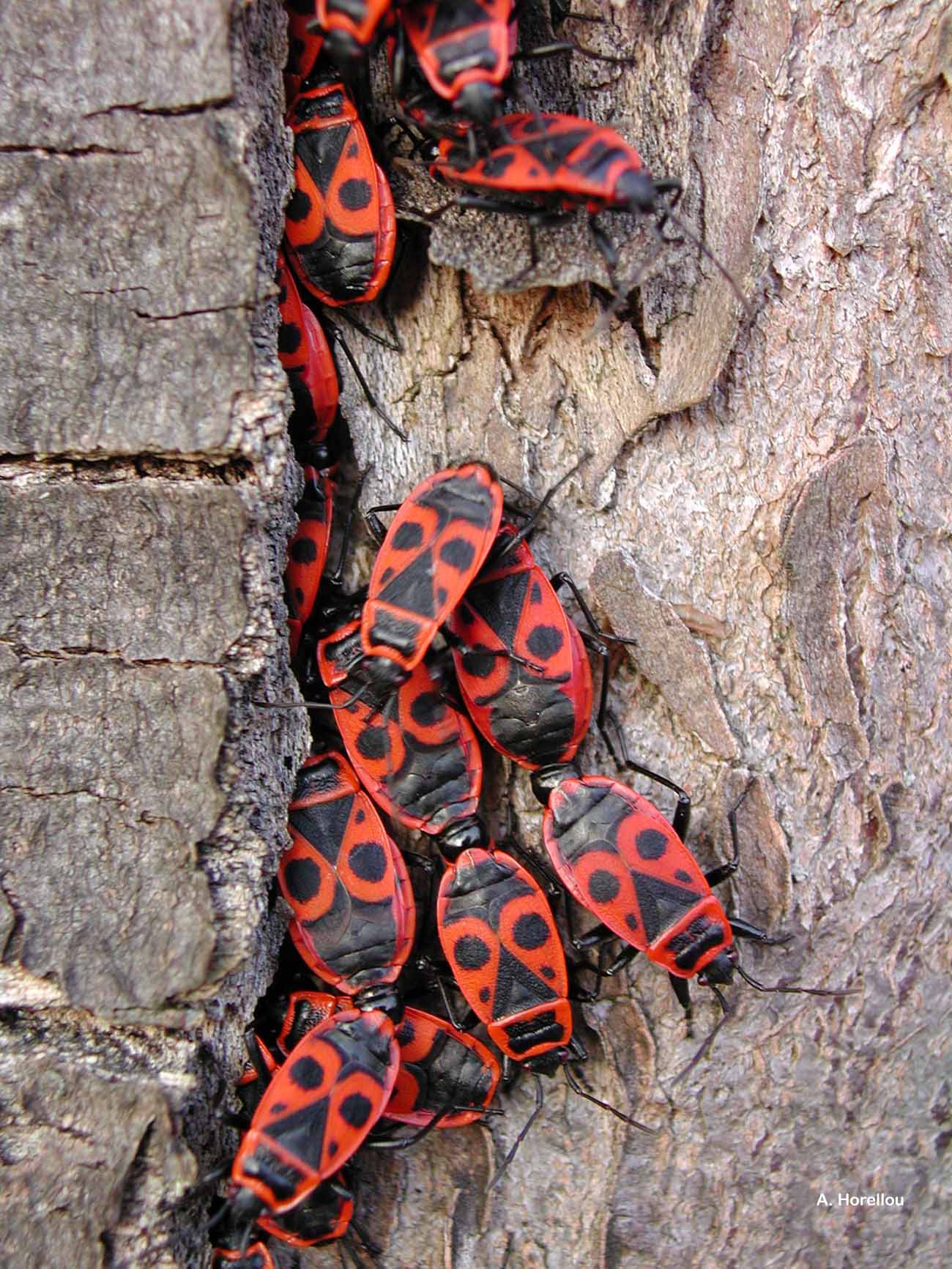
| Author : A. Horellou |
 |
To get the picture, please visit:
Arnaud HORELLOU
Muséum national d'Histoire naturelle - Service du Patrimoine Naturel
36 rue Geoffroy Saint-Hilaire
CP 41
75 231 PARIS CEDEX 05
e-mail : inpn@mnhn.fr
Legend: Bures - Avril 2005
Despite the Creative Commons license, please inform the author of the use which will be made of his photo
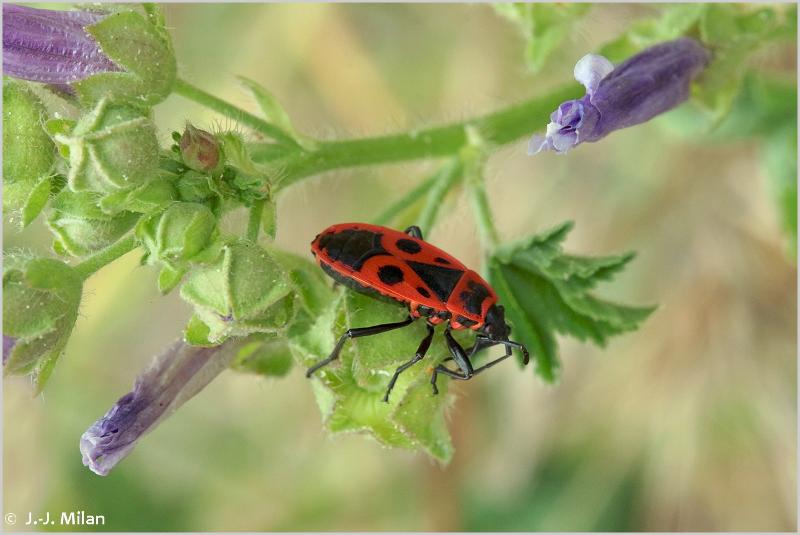
 |
To get the picture, please visit:
Jean-Jacques Milan
http://jjmphoto.fr/#Galeries.B
Société linnéenne de Bordeaux
email : jean.jacques.milan@wanadoo.fr
Despite the Creative Commons license, please inform the author of the use which will be made of his photo
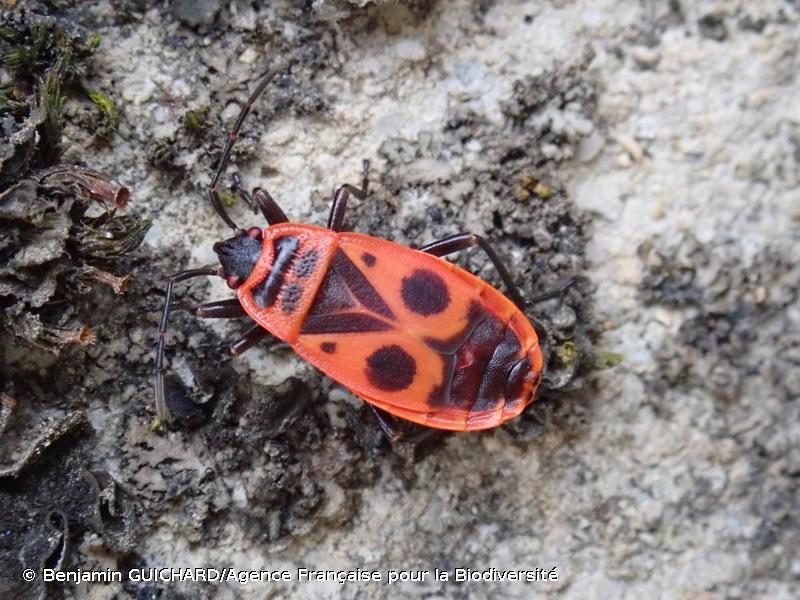
| Author : Benjamin GUICHARD/Agence Française pour la Biodiversité |
 |
To get the picture, please visit:
Benjamin Guichard
email : inpn@mnhn.fr
Despite the Creative Commons license, please inform the author of the use which will be made of his photo
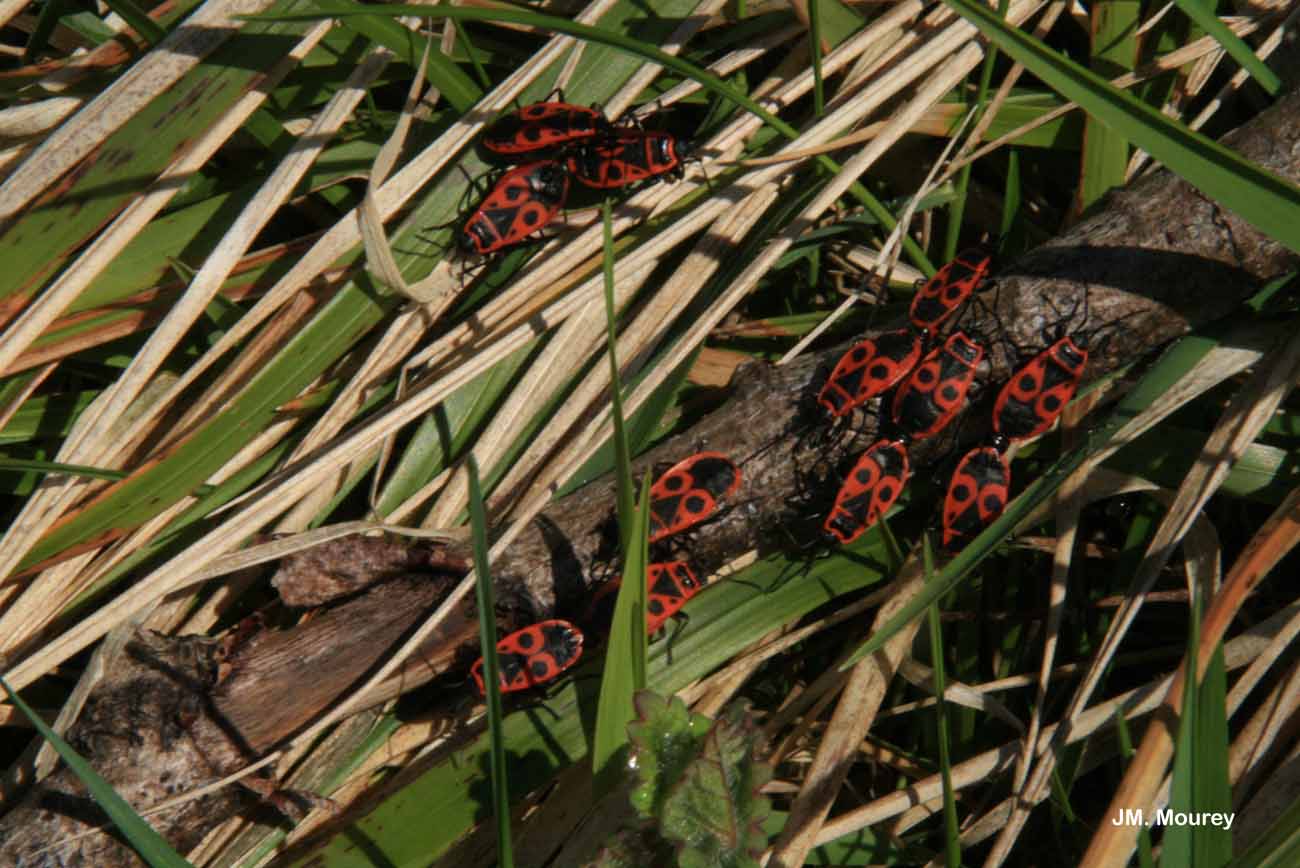
| Author : J.M. Mourey |
 |
To get the picture, please visit:
Jean-Michel MOUREY
Office National des Forêts - Direction de l'Environnement et des Risques Naturels
2 avenue de Saint-Mandé
75 012 PARIS
e-mail : jean-michel.mourey@onf.fr
Legend: Domblans
Any reuse of one or more photographs on this site is subject to an authorization request from the author.
Link to the Code of Intellectual Property (Legifrance)

| Author : A. Horellou |
 |
To get the picture, please visit:
Arnaud HORELLOU
Muséum national d'Histoire naturelle - Service du Patrimoine Naturel
36 rue Geoffroy Saint-Hilaire
CP 41
75 231 PARIS CEDEX 05
e-mail : inpn@mnhn.fr
Legend: Bures - Avril 2005
Despite the Creative Commons license, please inform the author of the use which will be made of his photo
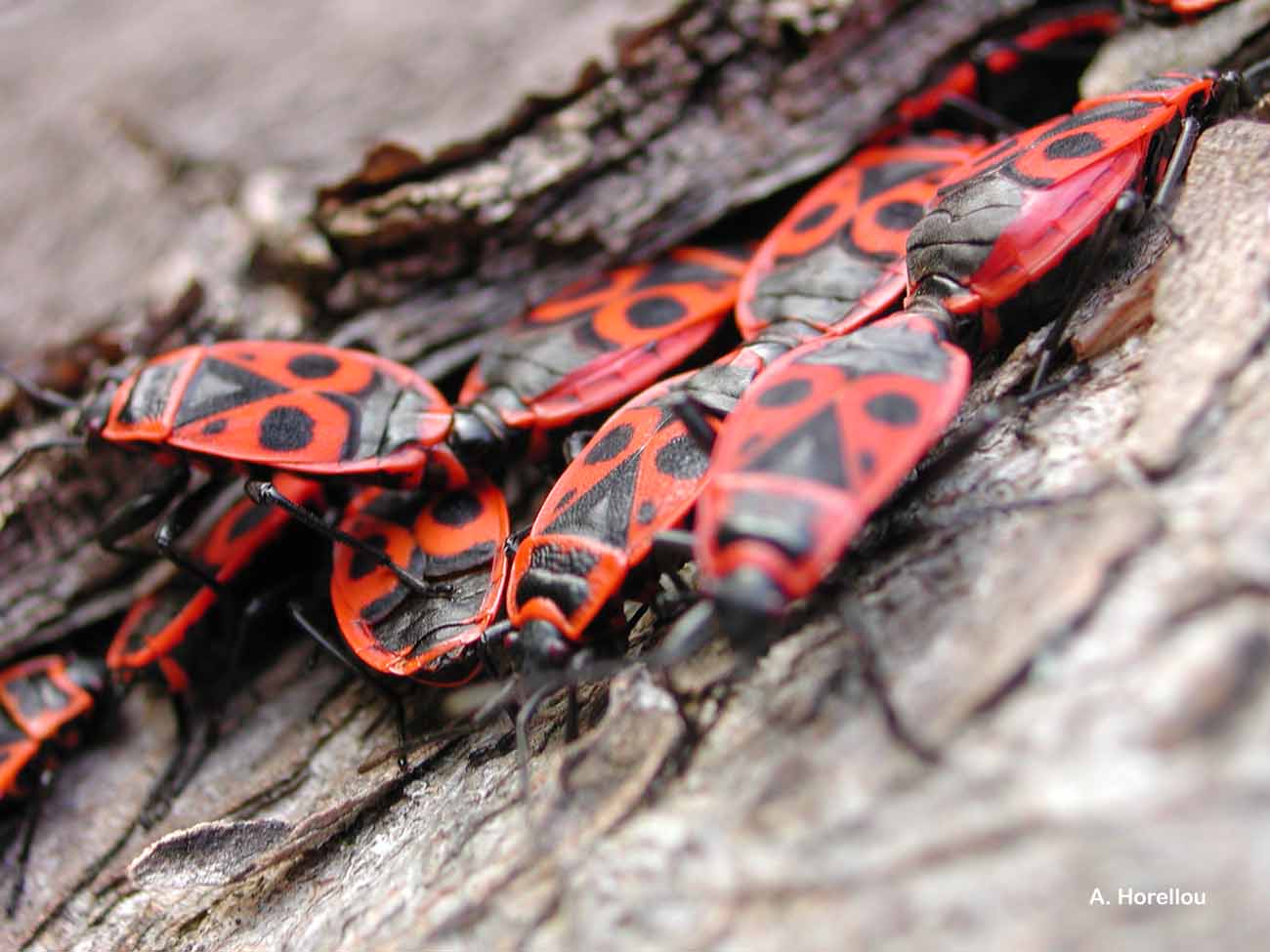
| Author : A. Horellou |
 |
To get the picture, please visit:
Arnaud HORELLOU
Muséum national d'Histoire naturelle - Service du Patrimoine Naturel
36 rue Geoffroy Saint-Hilaire
CP 41
75 231 PARIS CEDEX 05
e-mail : inpn@mnhn.fr
Legend: Bures - Avril 2005
Despite the Creative Commons license, please inform the author of the use which will be made of his photo
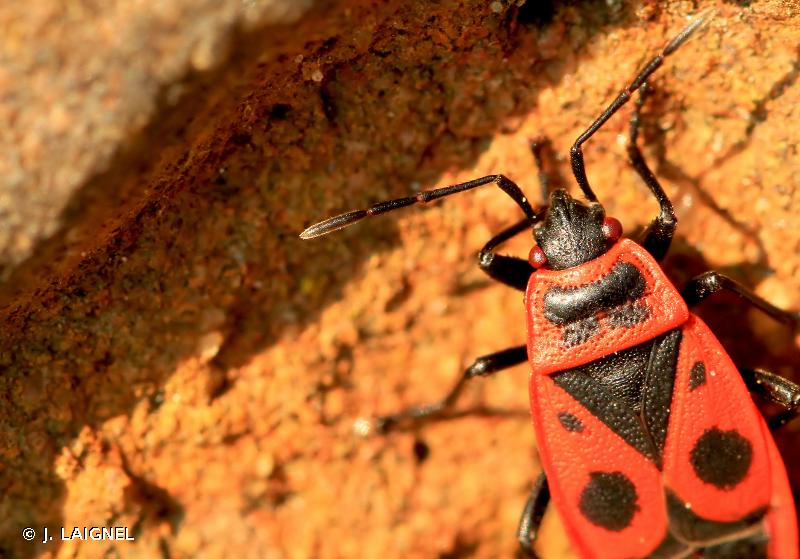
| Author : J. LAIGNEL |
 |
To get the picture, please visit:
Julien Laignel
Chargé de mission SNB - SPN/MNHN
4, avenue du Petit Château
91800 BRUNOY
Tel.: 06.10.68.23.36
Mail: julien.laignel@9online.fr
Despite the Creative Commons license, please inform the author of the use which will be made of his photo

| Author : F. Chevaillot |
 |
To get the picture, please visit:
Fred CHEVAILLOT
Moulin de Castor
La Maynobe
12550 COUPIAC
06 51 19 18 32
09 88 28 31 26
www.insecte.org
email : fred.chevaillot@wanadoo.fr
Any reuse of one or more photographs on this site is subject to an authorization request from the author.
Link to the Code of Intellectual Property (Legifrance)
Taille/poids :
Corps de l'adulte : 9-12 mm.
Diagnose :
Espèce de punaise avec des motifs de couleur rouge et noir. On distingue notamment sur chaque élytre une grosse tache centrale sphérique noire sur fond rouge. Une deuxième tache noire plus petite est présente au niveau de l'apex. L'ensemble évoque un masque africain.
Détermination :
L'espèce est simple à reconnaître.
Espèces proches :
Le Gendarme peut être confondu avec la Punaise de la Jusquiame (Corizus hyoscyami (Linnaeus, 1758)). Chez cette dernière, il y a une seule tache noire rectangulaire sur les élytres. L'espèce peut aussi être confondue avec Scandius aegyptius (Linnaeus, 1758). Chez cette dernière, il y a une seule tache noire sphérique, nettement plus petite, sur les élytres.
Période d'observation :
L'espèce peut être observée principalement du printemps à l'automne.
Biologie-éthologie :
Les adultes et les derniers stades larvaires passent l'hiver dans des interstices de rochers, dans des vieux murs ou dans les écorces des arbres. Aux premières chaleurs du printemps, les individus sortent se chauffer au soleil et les adultes s'accouplent. Les femelles pondent dans la litière sous les plantes. Il y a plusieurs générations par an. Ce sont des insectes piqueurs-suceurs omnivores qui se nourrissent principalement des fructifications de diverses malvacées et des tilleuls. Ils peuvent aussi se nourrirent de pucerons et sont parfois nécrophages.
Biogéographique et écologie :
Cette espèce est présente de l'ouest de l'Europe au nord-ouest de la Chine. C'est une espèce commune notamment dans les espaces ruraux et qui se maintient en zone urbanisée.
D'après :
http://www.insecte.org/spip.php?article68
http://www.insectes.org/insectes/questions-reponses.html?id_quest=514
P. Dupont(UMS 2006 Patrimoine Naturel (AFB / CNRS / MNHN)),2016
Continental
Metropolitan France
Overseas
Marine
Metropolitan France
Overseas
The map presents a summary at the 10 x 10 km grid of the observation data for the species transmitted to the SINP. These data have been subjected to validation filters.
The map presents a reference distribution layer of the species at the scale of departments and marine sectors. The presence and absence data were established by expertise within a network of partners. This reference distribution is used in the validation process of the SINP data at the INPN level.
Corresponds to a report on the basis of at least one observation proved within a period of 10 years (20 years for little-known invertebrates) preceding the year and no presumption of extinction since obtaining the last data nor doubt on reproductive and implemented nature of this population. For migratory species, the presence indicated concerns areas of reproduction.
This status is based on one or more of the following criteria:
This point covers the absence, more difficult by nature to demonstrate than presence. This status is based on one or more of the following criteria:
This status must be assigned to a department in which the presence of the species is casual.
Particular case of absence due to a proven extinction less than a half century ago (older disappearances are treated as "no probable or definite").
In the state of knowledge, we can not comment on the presence or absence in the current department. This is the default status when not comprised in one of the previous categories or whenever there is doubt.
The map shows the global distribution of the species based on GBIF data (Global Biodiversity Information Facility).
